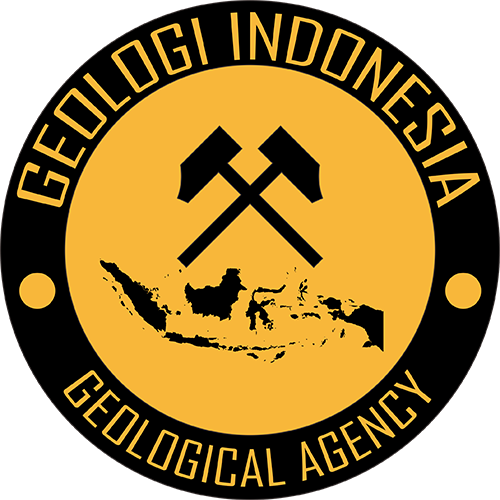Discovery Basin
Basin Status
Fore Arc
Tectonic Setting
0
Area (km2)
0
Visitor Count
0
Likes
Prospectivity & Resources
of
Mamberamo Basin
Basin Capacity
Data based on
18 Oct 2024
Oil
N/A
MMBO
(Million Barrels of Oil)
Gas
N/A
TCF
(Trillion Cubic Feet)
Resources
Data based on
18 Oct 2024
Oil
Conventional N/A
Conventional N/A
MMBO
(Million Barrels of Oil)
Gas
Conventional 7.58
Conventional 7.58
TCF
(Trillion Cubic Feet)
Oil
Unconventional N/A
Unconventional N/A
MMBO
(Million Barrels of Oil)
Gas
Unconventional N/A
Unconventional N/A
TCF
(Trillion Cubic Feet)
Executive Summary
of
Mamberamo Basin
Description
Version
1
Published Date
24 Jan 2023
Uploaded Date
-
Photos
Some footage of Mamberamo Basin
Introduction
Preliminary details of Mamberamo Basin
The Mamberamo Basin has a general east-west direction. The dimensions of this basin are 33,210 km2, located at coordinates 136.1° - 139.6° E and 3.4° - 2.1° S. The determination of the basin boundary is based on the height of the Papua Fold Belt in the south, the pattern of gravity anomaly, and isopach with a cut-off of 1750 m.There are two main parts of the crust involved in Papua, namely the Australian Craton which underlies the south, and the Pacific Crust which is the base of the north coast (including Cendrawasih Bay, Dow, drr,. 1982). The shape of New Guinea as seen now is the result of the growth of the Australian Plate and the Pacific Plate which took place from the Early Miocene to the present (Melanesian Orogenesa). Overall this element is caused by a compression force trending southwest-northeast in the direction of the impact. Dow, drr., (1984) estimates that the crustal shortening has exceeded 100 km at an average speed of 12.6 cm per year in a consistent S direction of 55oW
Data based on:
24 Jan 2023
Exploration History
Detailed history of Mamberamo Basin
Data based on:
24 Jan 2023
Regional Geology
Detailed regional geology of Mamberamo Basin
The main fault zones in North Papua are the Yapen Fault Zone, the Waipoga Fault Zone, the Waipoga Trough, the Gauttier Offset, and the Apauwar Fault Zone.The regional stratigraphy in North Papua is underlain by inseparable Pre-Tertiary rocks, consisting of ophiolite rocks from oceanic crust, volcanic basalt and diorite intrusions. On top of the bedrock was deposited the Auwewa Formation of Paleocene–Early Oligocene age, consisting of deep sea Biri limestone, abyssal plain shales, and Auwewa volcanic rocks. These rocks then underwent compressional tectonic events, as a result of the collision between the Indo-Australian plate and the Caloline-Pacific plate, resulting in folding and metamorphism. This tectonic event is marked by a regional hiatus.Above the regional hiatus was deposited the equivalent limestone of the Late Oligocene–Middle Miocene Darante Formation, consisting of reef coral limestone, reef limestone, and pelagic limestone, which are locally mixed with a small amount of volcanic rock.Above it is deposited the Middle Miocene–Late Miocene Makats Formation, consisting of widely dispersed turbidite deposits, shallowing upwards to become a deltaic system rich in amorphous organic content as a good potential source rock. In the field the Makats Formation found consists of alternating conglomerates, sandstones, siltstones and shales. Above the Makats Formation, a regional hiatus is formed again as a result of the unconformity that has formed in almost all parts of the basin due to very rapid subsidence of the basin.Above the hiatus zone, Pliocene – Pleistocene clastic facies rocks from the Mamberamo B Formation, Mamberamo C Formation, Mamberamo D Formation and Mamberamo E Formation are deposited, separated by areas of local unconformity. The Mamberamo B Formation consists of marl, siltstone, shale, sandstone and limestone. The Mamberamo C Formation consists of conglomerates, sandstones, siltstones and shales. The Mamberamo D Formation consists of claystone, marl, sandstone and gravel. The Mamberamo E Formation consists of claystone, marl, sandstone and gravel. The formations in the Mamberamo Basin were then covered by the alluvial deposits of the Koekoendoeeri Formation from Holocene to Recent.Field surveys were conducted on 5 tracks: 1) Yoka-Puay-Yokiwa Track, Jayapura Regency, found conglomeratic siltstones with limestone nodules from the Makats Formation, as well as sandy siltstones from the Makats Formation; 2) Nimbokrang Track, Jayapura Regency; 3) Waris-Senggi Track, Keerom Regency; 4) Demta-Worambaim Track, Jayapura Regency, found sandstone limestone of the Aurimi Formation with black clay/shale inserts, and containing Belemnite fossils, as well as conglomerates of various materials of the lower Makats Formation and submarine channel facies sandstones of the Makats Formation; 5) Sarmi Track, Sarmi Regency, found calcarenite from the Jayapura Formation, reef limestone from the Jayapura Formation, black claystone and limestone fragments from the UNK Formation, as well as gas seeps found on Masi-masi Island
Data based on:
24 Jan 2023
Petroleum System
Detailed petroleum system of Mamberamo Basin
Surface geological data is integrated with seismic data, wells, and data from micro-seepage surveys. There are 50 seismic lines and 10 drilling wells that are used to assist in the interpretation of the subsurface of the Mamberamo Basin. Several wells around the Mamberamo area show potential gas and oil footprints.Evaluation of source rock potential in the Mamberamo Region was carried out based on laboratory results from the drilling of the Apauwar-1 and Iroran-1 exploration wells. The rocks that have the potential to produce source rock in the Mamberamo Block are the Mamberamo Formation and the Makats Formation.The organic material richness of the Mamberamo Formation in the Apauwar-1 Well is generally fair up to 2150 m interval. At intervals below 2150 m, generally the organic material wealth is good which can produce gas. At intervals in below 3800 m, Mamberamo B/C Member source rock can produce oil. Maturity source rock at depths greater than 3820 m is mature, indicated by Tmax entering the mature window.The organic material wealth of the Mamberamo Formation in the Iroran-1 Well is generally good – very good.The organic material in the Makats Formation is generally good – very good. While the organic material in the Darante Formation is good. Maturity of source rock based on Tmax in the Mamberamo Formation, Makats Formation and Darante Formation is immature. However, based on Ro data, the Mamberamo Formation and Makats Formation are mature.The reservoir rock potential in the Mamberamo Block is found in three formations, namely: 1) Sandstones and carbonate rocks in the Mamberamo Formation as the main target, 2) Sandstones in the Makats Formation as the second target, and; 3) Carbonate rocks of the Darante Formation as the third target. During the drilling of the Apauwar-1 Well and Iroran-1 Well, a gas show was found. Petrophysical interpretation carried out at the Apauwar-1 Well and Iroran-1 Well, shows that the effective porosity of the Mamberamo Formation ranges from 10.8 – 27.9%. The effective porosity of the Makats Formation is 19.4%, and the effective porosity of the Darante Formation is 25.4%.The potential cap rocks are claystone of the Makats Formation, claystone of the Mamberamo D Formation and claystone of the Mamberamo E Formation. The results of a micro-seepage survey conducted by the Center for Geological Survey in 2014 showed that the gas in the Mamberamo Basin is predominantly biogenic gas
Data based on:
24 Jan 2023
Resources
Detailed resources of Mamberamo Basin
-
Data based on:
24 Jan 2023
Petroleum System Chart
of
Mamberamo Basin
Description
Version
-
Published Date
-
Uploaded Date
-
Petroleum System Chart
Petroleum system chart to Mamberamo Basin
Montage
of
Mamberamo Basin
Description
Version
-
Published Date
-
Uploaded Date
-
Montage
Detailed montage of Mamberamo Basin
Reports & Publications
of
Mamberamo Basin
Description
Version
1
Published Date
-
Uploaded Date
20 Jul 2023
Reports & Publications PDF
The PDF displayed is only pages 1 to 20. For a complete PDF, you can download it by clicking the download button.
Archives of Report & Publication
| Date | Report Description | Version | Doc | |
| 01 Dec 2016 | Rekomendasi Wilayah Keprospekan Migas Mamberamo | 1 | Download PDF |
| Date | Publication Description | Version | Doc | |
| Oct 05, 2022 | Jurnal Cekungan Mamberamo Tahun 2022 | 1.0 | Download | |
| Oct 08, 2021 | Jurnal Cekungan Mamberamo Tahun 2021 | 2.0 | Download | |
| Oct 04, 2020 | Jurnal Cekungan Mamberamo Tahun 2020 | 1.0 | Download | |
| Oct 08, 2019 | Jurnal Cekungan Mamberamo Tahun 2019 | 2.0 | Download | |
| Oct 07, 2018 | Jurnal Cekungan Mamberamo Tahun 2018 | 1.0 | Download | |
| Oct 07, 2017 | Jurnal Cekungan Mamberamo Tahun 2017 | 1.0 | Download | |
| Oct 02, 2016 | Jurnal Cekungan Mamberamo Tahun 2016 | 2.0 | Download | |
| Oct 04, 2015 | Jurnal Cekungan Mamberamo Tahun 2015 | 2.0 | Download | |
| Oct 03, 2014 | Jurnal Cekungan Mamberamo Tahun 2014 | 2.0 | Download | |
| Oct 05, 2013 | Jurnal Cekungan Mamberamo Tahun 2013 | 1.0 | Download | |
| Oct 09, 2012 | Jurnal Cekungan Mamberamo Tahun 2012 | 2.0 | Download |


